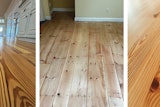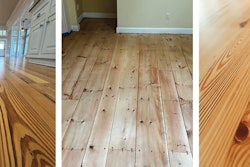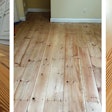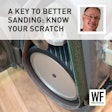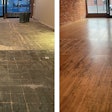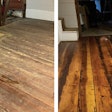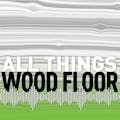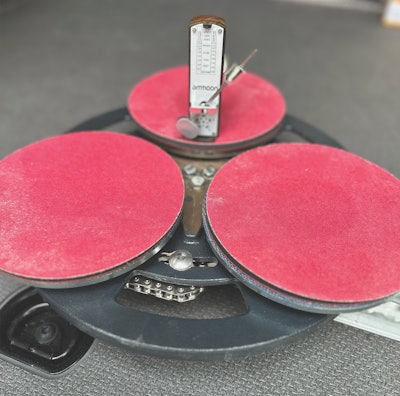
In my job helping contractors learn to work with the latest products in the industry, I have seen that there can sometimes be a substantial learning curve when they are working with planetary sanders for the first time. In particular, I’ve seen a lot of pros struggle with finding and maintaining the right pace. I’m always trying to think about how to make things easier, and this is one case where my life as a wood floor pro collided with my life as a drummer: I started thinking about matching your walking/sanding pace with a metronome to the grit you are working with. I experimented with it, and it works.
For instance, say you are working with 50-grit on a planetary sander. You can pull up a metronome app on your phone or use a metronome device and set it to 50 BPMs (beats per minute). Then, proceed to follow that pulse for the duration of that grit. As you move up in the grit sequence, change the BPMs to match whatever grit you are working with. (For apps and metronomes, there are lots of options, but I really like the Soundbrenner app. This company also makes a Pulse watch that can be worn on your wrist, bicep, or ankle to feel the pulse as opposed to hearing it.)
This can and should be altered by several factors, such as grit mineral, machine weight and aggression, but it provides a good starting point to achieve consistent results.
RELATED: Wood Floor Sanding 101, Part 1
For example, older floors may need to be dialed down or up in BPMs as you get into the work, but having that starting reference number with the grit being used helps determine your starting pace and determine if the selected grit is efficient enough. You may have to move even more slowly to get your first grit selection to make a dent. So, drop down to the next grit and dial in the tempo. Or maybe you are moving quickly with your first grit—now jump up a grit and dial in that tempo.
This can be valuable when starting a new mechanic out on the floor to help them learn the pace of each grit. It also helps to set the tempo for hectic starts to a day or overly caffeinated mornings where you try to rush and ultimately have to go back and correct mistakes. After getting used to this, you can start a “grit sequence playlist” that syncs up to the grit series you work with.
This can also help you avoid a common problem of moving too fast with lower grit abrasives when sanding with planetary sanders, which can create an unsatisfactory scratch pattern and cause the machine to jump around or excessively vibrate.
Another way to look at the question of when to slow down or speed up is to simplify things and sand a sample panel with an orbital sander. The higher its speed is turned up with a lower grit while you are moving slowly, the faster the finish or stock removal. The lower the speed setting, the more refined the scratch gets, with a higher abrasive grit, at a faster pace.
This is just a starting point. The idea behind matching abrasive grit numbers to the tempo on a metronome came to mind as a different way to approach sanding in harmony and possibly alleviate some stress. As always, listen to what you’re sanding.
RELATED: Get Better Sanding by Taking Care of Your Drum










